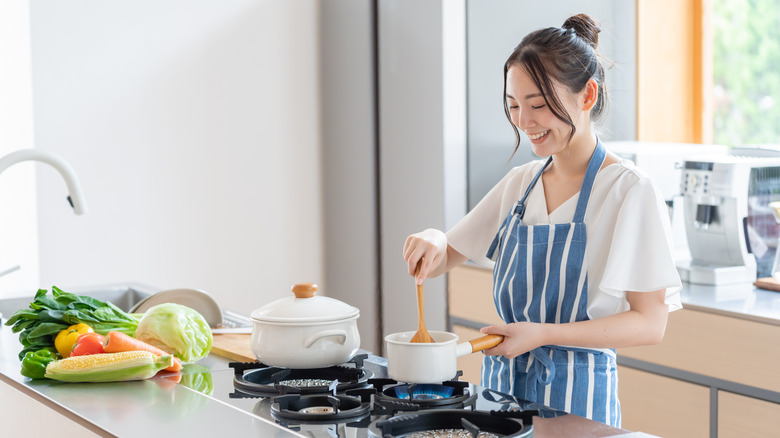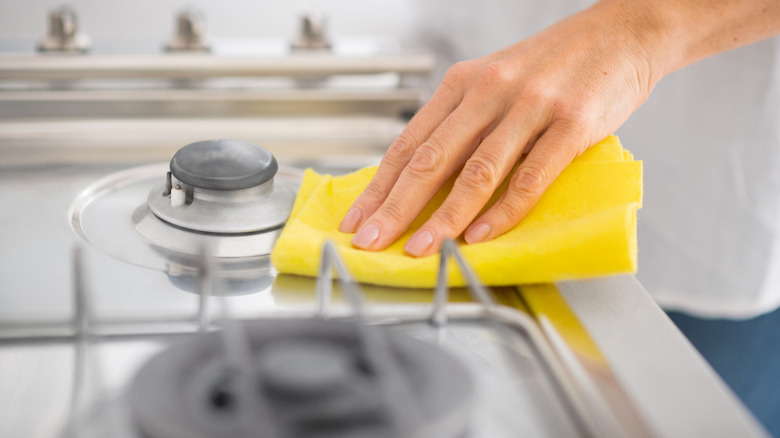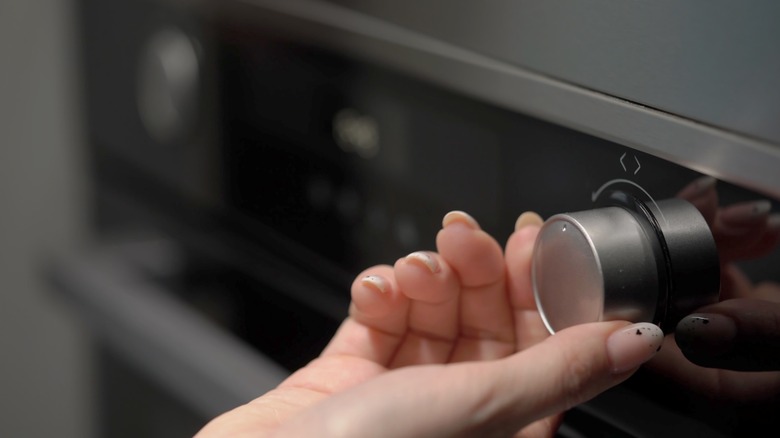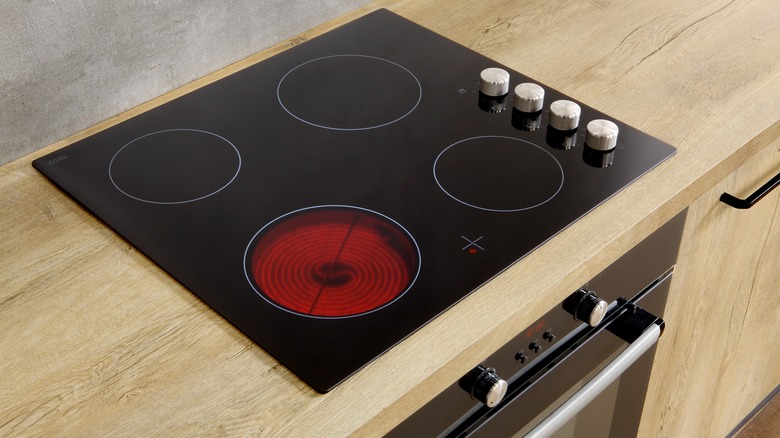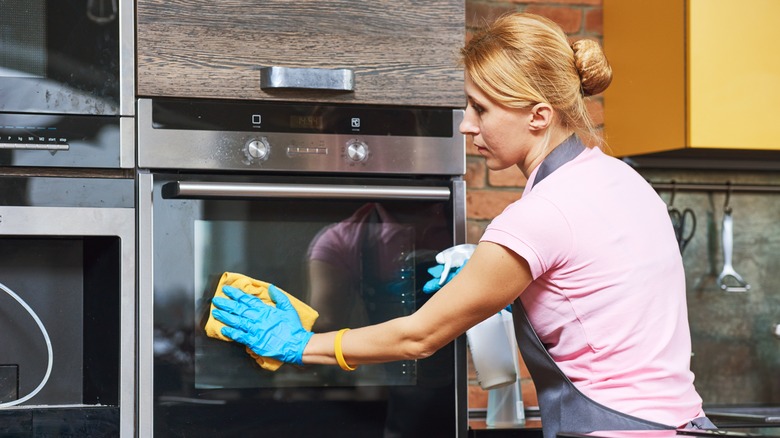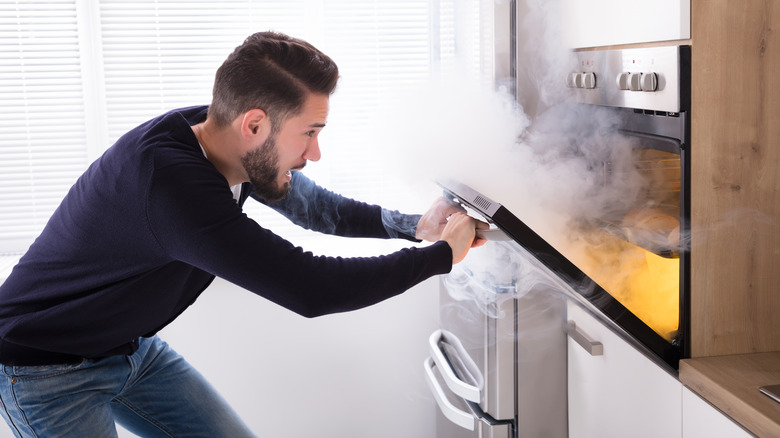How To Make Your Stove Last A Long Time
Your stove is one of the most important appliances in your household. According to H&R Block, stoves, on average, last between 13 and 15 years before they need to be replaced. More often than not, gas-powered stoves typically last a little bit longer than this time frame, while electric-powered stoves should be replaced around two to five years sooner.
While this lifespan may sound like a long time, when you take into account the major investment a stove can be, it's certainly one household appliance you hope can last for a while. The key to a stove's longevity is making sure it remains in tip-top shape, even as the years pass.
Luckily, there are techniques and regiments you can use to keep your stove in its best condition for the long haul, and even possibly extend its average lifespan. Here are a few ways you can keep your stove in good condition and last a long time.
1. Maintaining a cleaning routine
Keeping your stove clean is one of the easiest things you can do for your stove. According to Spoon University, you should give your stove a deep clean once a month. On top of this thorough monthly cleaning, you should also clean your stovetop after every use, per NBC News. This routine maintenance doesn't have to be elaborate. It simply involves rinsing your stove's grates with water or wiping down the surface with a damp paper towel to remove any spills, crumbs, etc.
Your monthly stove cleaning can easily be done with a simple baking soda paste, according to the "Today" show. To make this paste, slowly add vinegar to a bowl of baking soda until it reaches the right consistency. Before applying the paste to your stove, ensure the surface has been properly cleared from any spills and messes. When the surface is ready, scrub the paste onto the stove and let it sit for at least 30 minutes before rinsing it off.
If it's been a while since you've cleaned your stove, store-bought cleaners may work better than the homemade remedy to revive your stove's condition. Once you've got it cleaned again, though, try and keep to routine maintenance so you won't have to resort to stronger solutions.
2. Keeping the control panel functioning
As you routinely clean your stove, it's important to clean and check the stove's control panel, to keep the appliance functioning safely and properly. When cleaning your stove's control panel, it's important to do so gently. GE Appliances recommends using mild dish soap or detergent for this task instead of any harsh or abrasive chemicals. It also advises to never soak or submerge the area in water or a cleaning solution.
To clean the control panel of your stove, start by removing build-up food grime or other messes that may be stuck to the knobs/buttons. Then, mix together soap and water and dampen your choice of towel or sponge in the solution. Don't use a spray bottle as you'll need to better control the application of your chosen cleaner.
While you clean the stove's control panel, be extra careful around these burner components. Once the area has been cleaned, wipe it with water. Finally, finish off by buffing the area dry with a soft, clean cloth.
3. Wiping down the smooth-top
If you have an electric stove, more often than not, your stovetop will have a completely flat surface known as a smooth top. As with a gas stove, you'll want to keep this cooktop consistently clean; you'll also want to ensure it remains free of scratches as these are highly visible with a smooth-top design.
Before applying your cleaning solution, wipe down the smooth-top surface of any spills, crumbs, etc. Crumbs can actually lead to scratches if not removed. The Happy Outlet notes that you'll need cleaning tools and cleaners that are safe to use on glass. As for the cleaning solution, it recommends using a mixture of lemon juice and baking soda. A razor will come in handy for any stuck-on grime.
Once the smooth-top surface is cleaned, it should be rinsed and wiped down. To finish the job off, you can polish the surface with a polisher. Per the Glass Doctor, mixing 2 teaspoons of baking soda and 1 teaspoon of water will create a simple paste you can use for buffing. A reminder: never use dry cleaners on a glass surface as this can lead to scratches.
4. Remembering the oven, too
Generally, most stoves feature a combination of a stovetop and an oven underneath. This means that as important as it may be to keep your cooktop maintained, it's just as important to clean the oven. Doing so will help keep your appliance properly functioning for a longer time. When you clean your stovetop, you should also clean your oven.
Per Home Depot, there are various cleaners you can use to clean your oven. However, a mixture of baking soda, water, and vinegar happens to be the most highly recommended. To get started, add baking soda to a bowl and slowly add in water until it makes a thick paste. Apply the paste to your oven, then mix a solution of water and vinegar in a spray bottle to spritz on the paste.
This chemical reaction will help dissolve stubborn grease and grime that may be stuck in your oven. Ensure you let this cleaning combination sit and work inside your oven for 12 hours, or at least overnight, before rinsing it off with clean water. Along with the oven itself, it's important not to forget to also clean the oven racks and the oven door. With regular cleanings, you can avoid needing to use anything stronger to clean this part of the stove.
5. Using caution with the self-cleaning feature
As you continue to keep your oven and stove properly maintained, you may feel the urge to use your oven's self-cleaning feature once in a while. Although this may be an easy way to go about cleaning your oven, it may not be the best experience for your appliance, according to Tech Advisor.
First and foremost, using the self-cleaning feature on your oven can fill your home with smoke and other toxic fumes that accumulate as the grime inside the oven begins to deteriorate. Along with the fumes, the heat the oven produces during this process also makes the feature a major safety hazard to your home and everyone in it, especially if you have children or pets.
Further, because the oven while self-cleaning needs to remain at an extremely high temperature for a rather long period of time (for it to actually work; according to Consumer Reports, a cycle takes three to five hours), it also takes a lot of energy, which can make it much more expensive than other cleaning methods — like regular cleaning.
Finally, above all else, your oven's self-cleaning feature also has the potential to cause damage to your oven, leading it to deteriorate faster in time. Tech Advisor explains that as your oven gets hotter and hotter, more wear and tear can take effect on the appliance; therefore, although the feature may be convenient, it should not be used on a regular basis, or at all if you can avoid it.
